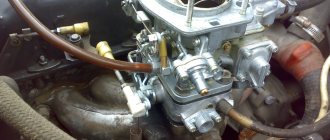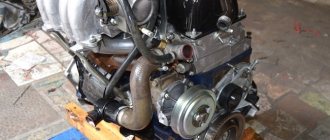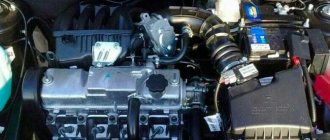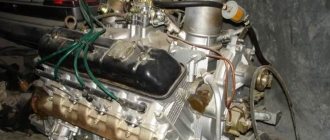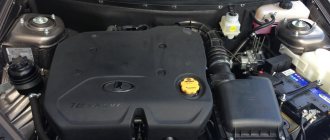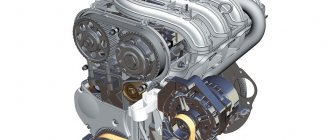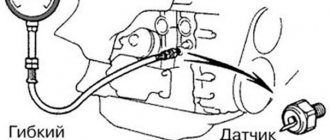The weight of the equipped and fueled Oka car is 645 kg, and its total weight is 975 kg.
"Oka" (VAZ - 1111) is a small-sized and subcompact car, first developed and produced at the Volzhsky Automobile Plant in the 80s. The goal of the developers is to create an affordable, popular and economical means of transportation. How much does Oka weigh? The gross vehicle weight is determined by the curb weight and the payload weight. So, today we will learn about the features and main characteristics of the Oka car.
History of VAZ 1111/11113 engines
The engineers who developed the Oka car faced a rather difficult task - to make a compact and affordable vehicle, made from common components and with good maintainability. Similar requirements were put forward for the engine - it had to be simple, reliable and easy to repair in the event of a breakdown outside specialized service stations with qualified personnel.
VAZ "Oka":
In the first versions of the Oka, the developers used a two-cylinder power unit from Daihatsu Quore with 30 horsepower. Several prototypes were made with this engine. But, although the engine had a well-functioning and reliable design, they refused to copy it, since the foreign power unit required high quality engine parts and assembly standards. In addition, copying required assembling engines from scratch and mastering the corresponding technical process, and this would make the car unacceptably expensive and seriously delay the production of serial samples.
Then the engineers turned to existing engine solutions in the domestic auto industry.
Interesting: the choice of engine was influenced by the launch of the VAZ-2108 on the assembly line of the Togliatti plant.
The G8 engine was already fully developed, so to equip the new compact youth car, it was decided to create a two-cylinder engine based on the G8 engine, which at that time was the main one in VAZ production. Through a series of technical manipulations, the 1111 engine was obtained, which they began to equip the Oka with.
Description
The presented model is a type of four-stroke carburetor-based engine.
Its distinctive feature is that the camshaft is located at the top of the Oka engine. Not all modern and old power units are equipped with such a feature.
It is worth noting that all cylinders are in-line, which allows for very good technical potential. The designers of the Oka car took one half of the well-known VAZ 21083 and made it the basis. It follows from this that some parts and mechanisms are no different from their older brother.
As for the cooling system, there is a closed-type liquid circulation. Therefore, the Oka engine will be able to operate in any weather conditions, which is very good. He is not afraid of severe frosts and heat. Thanks to the combined lubrication system, all parts and mechanisms will operate virtually without failure.
VAZ 1111 engine - features and design
The 650 cc engine 1111 is “half” of the 2108 engine. To create it, they simply took half of the engine and cylinder block, since it was easier and cheaper to develop equipment for such a solution than for a new unit. Thus, the 1111th is a two-cylinder in-line petrol carburetor engine, with 2 valves per cylinder and an overhead camshaft configuration.
1111 assembled:
Main characteristics of the Oka engine:
- power - 30 forces;
- volume – 649 cubic meters. cm.;
- torque - maximum 44 Nm at 3400 rpm;
- recommended fuel is gasoline with an octane rating of 92;
- cylinders: 2;
- type of food – carburetor;
- valves – 4;
- fuel consumption – about 4.7 liters per 100 km;
- engine cooling – liquid;
- engine environmental standard: Euro-0.
Weight and dimensions of the Oka engine:
- weight – 66.5 kg without gearbox and clutch;
- overall dimensions – 550*640*670 mm.
The entire working process takes place in two revolutions of the crankshaft, due to which the engine experiences severe vibration loads. To compensate for them, two balancing shafts are provided to reduce motor vibration.
Interesting: in the VAZ 1111 engine, the fuel pump is not electric, but mechanically driven from the engine.
The supply of the fuel mixture is controlled by the carburetor. The lubrication system, as in 2108, is created with the installation of a gear pump. Engine oil is taken from the crankcase and supplied to the friction pairs of the camshaft and crankshaft. The cylinders are irrigated with oil mist generated during the operation of the crankshaft, and the engine gas distribution mechanism and valve rods are lubricated by gravity.
VAZ-1111 (Oka) owner reviews
Engine 0.7 l
- Konstantin, Ekaterinoslavl. I have a VAZ-1111 produced in 2005, this is my first car. I was very happy as soon as I got behind the wheel of the Oka. I quickly got used to driving. The controls are simple and clear at first glance. A car for leisurely driving, very noisy on the highway and in the city, at idle and high speeds. In this case, there is no point in turning the engine to the red zone. I have a version with a 33-horsepower 0.7-liter engine, with a manual transmission. In the city, the car consumes 6-7 liters/100 km, and on the highway it turns out to be 5 liters. The speed of 100 km/h is maintained confidently. On bumps it behaves nervously, jumps up and needs to be steered. The current mileage is 88 thousand km, I service the car myself.
- Alexander, Belgorod. I drive an Oka 2007 model year, the car is still quite fresh. The mileage is only 80 thousand, or there will be more. A car with a 35-horsepower 0.7-liter engine, with manual transmission and front-wheel drive. Consumes no more than 8 liters in the city, supports 92nd gasoline. Not a bad car as a first car.
- Boris, Moscow region. I drove this hatchback from 2000 to 2008. Fortunately, I had to sell the car due to the crisis. I was not at all disappointed, as the car was simply boring. It is cramped and uncomfortable, designed exclusively for two passengers. And the back seats are purely symbolic. The dynamics are not bad in the city, and fuel consumption was around 6-7 liters. The interior warmed up very quickly - and this was not due to the heater, but to the short wheelbase. Visibility is excellent, as is maneuverability. Constant minor breakdowns annoyed me. I would have kept Oka for myself if my family had not appeared. I needed a more spacious car.
- Oleg, Nizhny Novgorod. I drove 100 thousand km on the Oka and sold it. The car served me faithfully. But such city cars quickly become boring; girls prefer them more. But this car was my father’s, bought back in the late 1980s. I learned repairs from my ancestors, and I got a garage to boot. Therefore, there were no problems with service. The hatchback consumed 6-7 liters, the car had a 33-horsepower engine.
- Nikita, Irkutsk. I have a 2006 Oka, I still drive it. The car is for city trips, I use it to deliver pizza to addresses - I work as a courier. I bought the car in April 2018 from the first owner. In excellent condition, didn't even need to be repainted. The chassis is more or less intact, especially for me for a calm and leisurely ride. I use the rear seats as an additional trunk. The 0.7 liter engine is very loud, consumes 7-8 liters in the urban cycle.
Engine 0.8 l
- Valentin, St. Petersburg. I have the Oka in my garage and have no intention of selling it. She is like a relic to me. The car is running, I rarely go out because of eye problems. A fully working copy, sometimes the grandchildren come for a ride. But this car is not suitable for them on a permanent basis - there is too much trouble with it. I would love to drive, but my health doesn’t allow it. The model was produced in 1992, the current mileage is 77 thousand. Engine 0.8 liters, power 35 horses. It's a good car, I quickly got used to it. Parking is generally a breeze, and you can easily drive between large SUVs. Gasoline consumption is 7-8 liters in the city.
- Alexey, Tomsk. A solid and practical machine for its time. The Oka was useful to me for driving around the city, and that’s all. It is not intended for the track. There are noises, vibrations and drafts in the cabin. Model 2008, now I rarely go out - it sits collecting dust in the garage. The best option as a first car. In the city the consumption is 6-7 liters.
- Daniil, Bryansk. I bought an Oka in 2022, it cost me 50 thousand rubles. The car is completely restored, I didn’t spare any money. Gasoline consumption is 7-8 liters, there is 100% support for 92 fuel. On the highway you can fit 5-6 liters. The maximum speed is 130 km/h, but it is better to drive no higher than 100 km/h, otherwise it will be difficult to hold the car. In addition, everything in the cabin creaks and buzzes, there is no comfort. Even at city speeds of 60 km/h, the interior seems to live its own life, as long as the doors don’t fall off while driving. With a 35 hp engine. With. acceleration to the first hundred in 25 seconds, according to the passport data.
- Semyon, Minsk. I became the owner of this city car in 2022. This is my first car, I really wanted to quickly get my own car, so I didn’t continue to raise money. In addition, I also wanted to work part-time in a taxi - somehow help my parents. I was 19 years old then. I continue to work as a taxi driver, I’m happy with the car. Consumption in the city is 7-8 liters. The engine produces 35 horsepower.
- Andrey, Primorsky Krai. I am the owner of a 2008 Oka, I bought a car with a 33-horsepower engine, manual transmission and a basic set of options. True, there was no air conditioning. Window lifters are manual type. It would seem that there is nothing to break in this car, and it is easy to maintain. However, the reliability of the car is mediocre due to low quality parts, because they have a very short service life. The thin body quickly rusted and had to be rebuilt and repainted. Gasoline consumption is 7-8 l/100 km.
Motor 1.0
- Nikolay, Omsk. I thought for a long time about what to take - I passed my license and needed a cheap car just to ride with friends. My boyfriends and girlfriends and I chipped in on the Oka and found a car in good condition for 55 thousand rubles. Model 2008, with a top-end 53-horsepower engine. The cabin is surprisingly comfortable. The car is reliable. Gasoline consumption is 8-9 l/100 km.
- Vitaly, Orenburg. I drove 88 thousand km on the Oka and decided to write a review. A car with an excellent engine that produces 53 horses, although the dynamics are very decent. The working volume is 1.0 liters, gasoline consumption is 8-9 liters. The car requires special attention - I mean frequent breakdowns in the suspension; once I changed the gearbox along with the clutch. The dynamics are normal, acceleration to 100 km/h in 24 seconds. Unfortunately, after 100 km/h the engine quickly turns sour. In addition, it is very noisy at high speeds and also at idle. Gasoline consumption on the highway is around 5 liters.
- Tatyana, Petrozavodsk. I got the eye from my grandfather. A clean and well-maintained car, without any pitfalls. I'm used to it, and I'm not going to sell it yet. A powerful 53-horsepower engine consumes 8-9 liters, which is enough dynamics for me. I feel comfortable in the cabin, as does the front passenger. Rear seats are for children.
- Nikita, St. Petersburg. A solid, compact and maneuverable car, adapted for the city, for all this city bustle. Despite the cramped interior, these shortcomings are compensated by low fuel consumption, a small turning radius and ease of driving in city traffic jams. This car will go where no hatchback, even a B-class, can go. In the city of Oka it consumes 7-8 liters. I have the 2007 version, with a liter 53-horsepower engine.
Motor VAZ 11113
This engine appeared later as a modification of the same engine from the V8, when the latter was brought to a volume of 1.5 liters (VAZ-21083). The engine was again “halved”, resulting in a 750 cc unit. The appearance of motors 1111 and 11113 is the same, the changes affected only the internal part. The car with this engine was called LADA OKA.
So, it was increased to 81 mm. motor piston diameter (from 76). Engineers installed an additional cooling system for the combustion chamber and made the inter-cylinder partitions thicker.
Additional cooling turned out to be necessary due to the increased heat generation of the new engine: without it, the pistons often jammed, the cylinder walls lifted, and other malfunctions occurred, typical of engine overheating.
The updated engine became 3-5 horsepower more powerful, although it remained carburetor-powered. Otherwise, the VAZ 11113 engine received technical characteristics almost no different from its “younger brother”, in particular, the eco-standard remained Euro-0, and the design of the fuel supply system (carburetor) remained the same. Main parameters:
- working volume – 749 cubic meters;
- power developed by the motor: 33 forces;
- standard torque: 50 Nm at 3200 rpm;
- fuel: 92 gasoline:
- fuel consumption: up to 6.2 l. by "hundred".
Interesting: Oka received the 11113 injection two-cylinder engine, such a project existed at the plant, and in 2005 a limited number of these cars were even produced. The injection version received the marking 11113-20. But the new product did not go into wide production due to many problems and the need for improvements, although today you can still buy a kit to convert the engine into an injection one.
This is what the factory injector kit looks like for the 11113th engine:
There are also “homemade” projects for installing an injector with subsequent modifications to the engine - a compressor, flashing the injector ECU, etc. In addition, the SeAZ plant, before the cessation of Oka production, produced a model with engine 11116 - a licensed three-cylinder injection engine of Chinese origin TJ 376 QE. This engine develops up to 53 horsepower and complies with Euro-2 standards.
Basic faults
In the early days of the 1111/11113's existence, Oka owners often complained about increased annoying vibration and noise from the engine compartment. The noise was especially loud when the engine was warming up; the balancer shafts mentioned above were to blame for it. This phenomenon worries car owners, but is not considered a malfunction. The engine may also be noisy due to too large valve clearances. The problem is eliminated by adjusting them. Vibration is a design feature, since the engine only has two pistons. A fairly common problem with engines is burnout of the cylinder head gasket. Its main reasons:
- factory production flaws, when the gasket was manufactured with inaccuracies;
- Incorrect tightening of the cylinder head, in which the gasket is not fully compressed.
If the motor is repaired, the seal is replaced and cannot be reused.
Important: if there are burrs on the new gasket, it is also not recommended to install it in the engine.
The Oka 11113 engine may have difficulty starting “hot” after a short stop. The reason for this is the layout of the engine compartment and problems with the fuel pump diaphragm. In a hot VAZ 11113 engine, fuel vapors are formed, including in the cavities of the fuel pump, and this unit is not intended for pumping gases and can “fail” when starting the engine before it cools down. The aperture can be changed.
Important: if a problem with the motor occurs on the road, you can simply place a damp cloth on the pump as a temporary measure. This will cool the unit somewhat and allow you to get to the place where the diaphragm can be replaced.
Other possible problems:
- Loss of engine spark.
The ignition coils are located in such a way that water can enter them, for example, when the car crosses puddles. Water causes the voltage booster module to fail, and as a result, the engine cannot be started. There may also be general wiring problems associated with poor build quality and poor-quality wires, which are typical for VAZ engines in general.
- Damage to the engine cooling system.
Most often the pump fails due to poor assembly and low quality components. If the pump fails, the engine overheats and breaks down, so you need to monitor the temperature of the unit and change the pump promptly, if necessary. The engine thermostat is also not of high quality and may fail, with subsequent replacement.
- Electronic sensor failures.
Maintenance
The declared resource of Oka engines under conditions of timely and correct maintenance is 120 thousand km. That is, these units, despite a number of inherent problems, can be called relatively reliable in their category.
The scheduled maintenance period is every 15 thousand kilometers. As part of the service, the oil is changed (it is advisable to use a synthetic lubricant; if semi-synthetics were poured into the engine, the interval is reduced to 10 thousand km). Therefore, when choosing which oil to pour into the Oka engine and when, you should clarify what liquid is already in the crankcase. When replacing, the oil system is washed and the oil filter is changed. Oil viscosity grade – 0W 40. 5W 40, 10W 40, depending on the season.
The lubricant volume in the 1111/11113 engine is 2.5 liters, the level is controlled by the oil dipstick. Overfilling liquid is strictly prohibited!
Valve clearance adjustment is supposed to be done every 30 thousand, but in fact it is carried out according to necessity and the actual condition of the engine. Also at this mileage you should clean the carburetor and adjust the idle speed.
After 60 thousand mileage, the fluid in the cooling circuit should be changed. If this is not done on time, the substance will degrade and lose its anti-corrosion and lubricating properties, reducing the life of the system as a whole. At this mileage, it is strictly necessary to replace a worn timing belt: if it breaks, the valves will bend, which will lead to the need to change the engine or make expensive repairs.
Tuning the Oka engine
Since the power of the power unit is small, tuning as such does not make much sense: you can achieve an increase of up to 10%, especially with flashing the ECU of the injection version of the engine, but against the general background it will not be noticeable. The technical characteristics of Oka engines do not allow them to extract much power.
As a “custom project”, the owners of these cars can install an injector from a VAZ-21083i engine with improved characteristics, but this is a rather labor-intensive and financially expensive operation. In terms of cost, it is approximately equivalent to installing the Chinese TJ376QE mentioned above. To continue tuning and extract more power, a compressor can be installed on an injection engine and other modifications can be made as desired.
How much does the Oka-6M refrigerator weigh?
In Soviet times, not only cars, but also two-chamber refrigerators were produced under the Oka brand. The most popular model of those times was the Oka-6M, the distinctive feature of which was a black rim that framed the front doors. Stripes of the same color separated the freezer and refrigerator compartments and served as a kind of “trademark” of the product.
The refrigerator with a total volume of 300 liters perfectly accommodated the supply of household provisions. True, the metal lattice shelves were a little inconvenient for storing small products, and spilled liquid immediately flowed onto the lower compartments of the refrigerator. Unlike modern “refrigerators”, the Soviet “Oka” was a rather noisy unit - this was especially noticeable at night.
Now we know how much Oka weighs, as well as other interesting facts from the “life” of cars and refrigerators of this brand.



